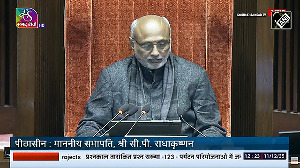Green bucks are flowing into the country in exchange of eco-friendly projects with September having seen the largest number of companies earning carbon credits worth Rs 188.44 crore (Rs 1.88 billion).
Many of these are public sector undertakings like Rajasthan State Mines and Minerals which has been issued 57,004 cers or (carbon emission reduction points) or carbon credits by the United Nations Framework Convention on Climate Change (UNFCCC) this month.
Companies from the UK and Japan are vying with one another to strike a deal with the company and even at a conservative cost estimate of 10 euros per cer, the company is all set to make Rs 3.18 crore (Rs 31.8 million).
Inderjit Singh of Synergy Consultants, which has been brokering the sale of cers for this PSU, said that even after two per cent of the money going to UNFCCC as adaptation fund, the company will get this amount.
The company deals only with green projects which combat carbon dioxide and ethane emissions. These are the cers that are most in demand and qualitatively better.
But this month cers have been issued to Indian companies like never before. September 20 saw 98,545 cers come to the kitty of SKPCL India's 20 mw Kabini Hydroelectric project.
On September 11, a bio-mass project in Rajasthan, which makes power from mustard crop residues, got 30,368 cers along with ESMML's 57,004 cers.
The same day Gujarat's HFC got 1,157,472 cers for its project for GHG emission reduction by thermal oxidation.
Again two days before that, UNFCCC issued 71,678 cers to the 18 mw Kemphole mini hydel scheme by International Power Corporation Ltd India and 1,11,570 cers to a waste heat recovery based captive power project at Monnet, and 10,971 cers for Nagda Hills Wind Energy project.The list stretches further including two more projects worth 1.5 lakh cers..
And in August the number of cers issued were less but not insignificant and the flow has been throughout the year though it is at its peak this month.
The money is taken up in maintenance and operation of the windmills or projects concerned and do not really yield any profits in terms of money, said Singh. But it is all for a good cause.
Which is exactly what the Kyoto Protocol intended in devising a market-based mechanism called Clean Development Mechanism.
While many of the cers are listed on the green exchanges in Asia and Europe, many deals take place through brokers like Synergie and Ernst and Young.
Cers are issued on a yearly basis and the first ones were issued only in November last year worldwide.
They are issued on the basis of performance of the eco-friendly project and buyers are mostly companies in rich countries in Europe, Germany and the UK which are unable to go through expensive technology replacement of their polluting units in keeping with Kyoto Protocol.
Hence they buy good marks earned by green units in third world countries such as Brazil, India and Sri Lanka mostly and remain honest to the Protocol requirement of restricting emissions of greenhouse gases.






